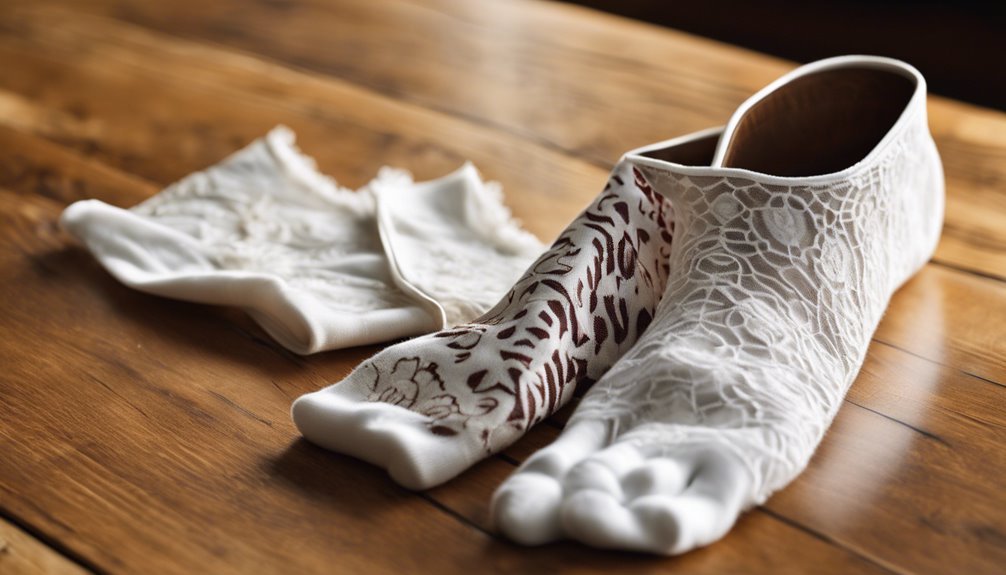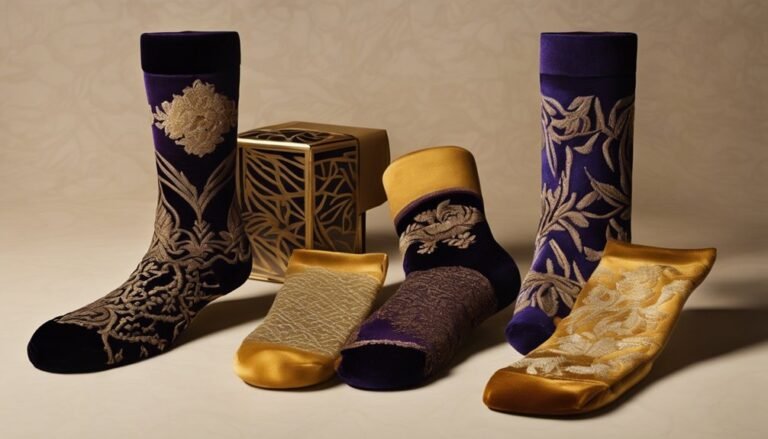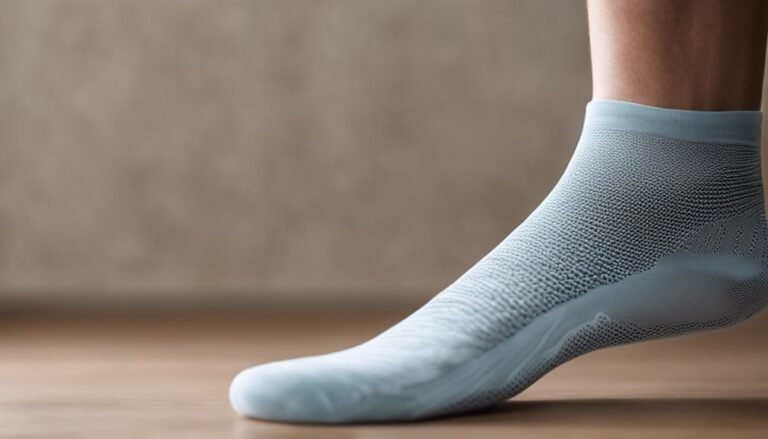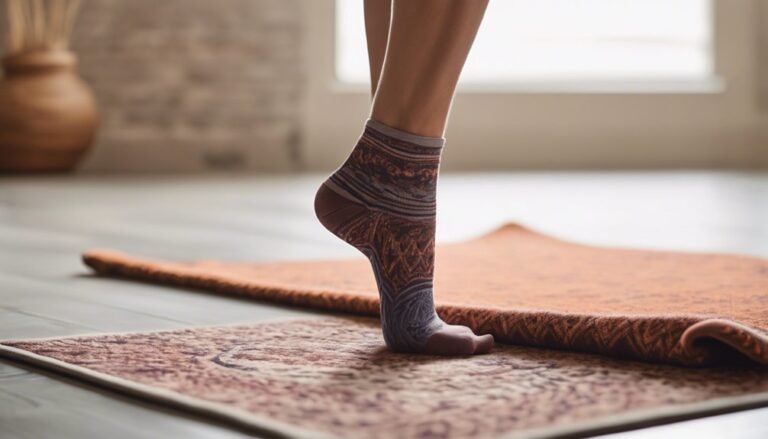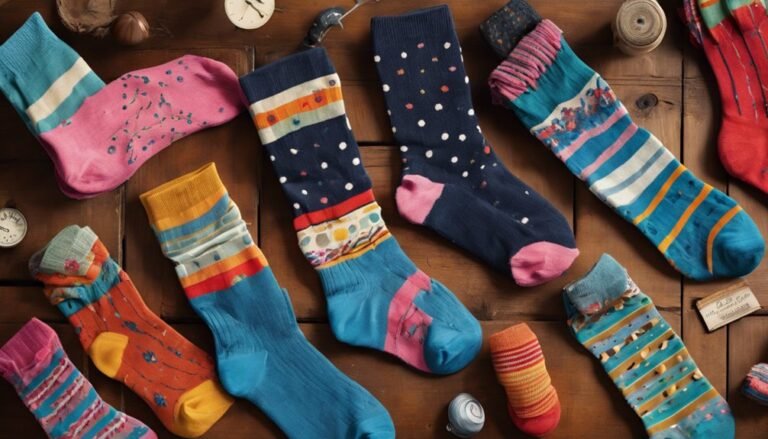How Japanese Tabi Socks Have Influenced Global Fashion
Have you ever noticed how a simple pair of socks can carry a rich cultural heritage? Japanese tabi socks, with their distinctive split-toe design, have seamlessly woven their traditional roots into the fabric of global fashion.
Imagine spotting them on the runway, embraced by high fashion for their unique silhouette, or seeing their minimalist appeal influence the realm of streetwear. These socks don't just boast style; they embody handcrafting techniques and sustainable materials that align with today's eco-conscious trends.
You'll find them in versatile applications, from athleisure to high fashion, as customization and cultural fusion gain momentum.
Discover how these socks have made a profound impact on the fashion world, cherishing heritage while driving innovation.
The Historical Roots of Tabi Socks
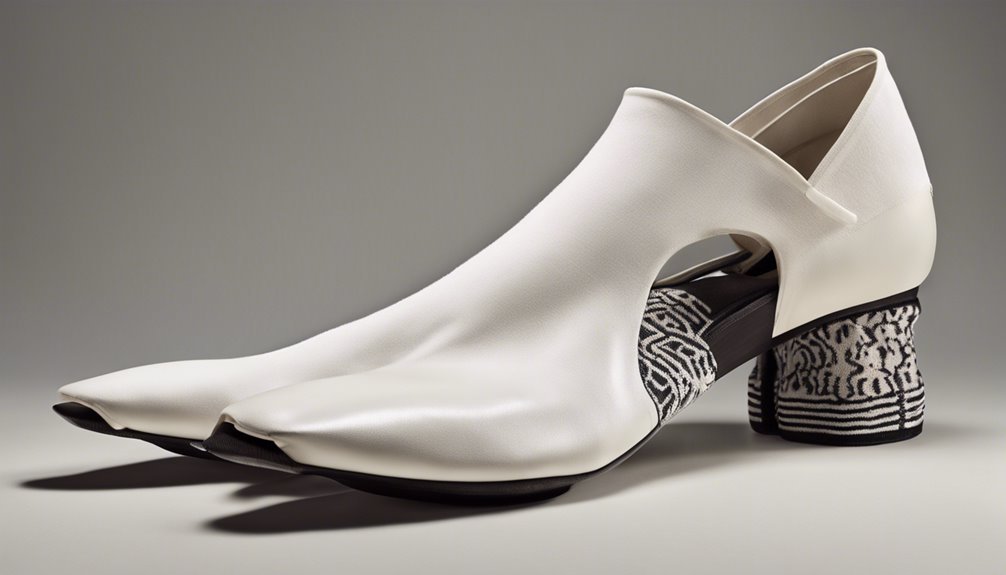
Although the modern world often views fashion through the lens of current trends, understanding the historical roots of garments like tabi socks provides valuable context. Tabi origins trace back to the 15th century, when these split-toe socks emerged in Japan. Initially crafted from leather, they evolved into cotton variants, allowing greater comfort and versatility. This evolution mirrored Japan's cultural shifts, as the nation opened up to foreign influences and adapted its sartorial practices.
Traditional Uses and Cultural Significance
When you explore the historical roots of tabi socks, you'll find they were originally crafted to accommodate traditional Japanese footwear like zori and geta, playing a vital role in both practicality and fashion. These split-toe socks aren't just about function; they carry deep symbolism in Japanese culture, representing purity and a connection to nature. Understanding their traditional uses gives you insight into how these garments have transcended their original purpose to become cultural icons.
Historical Roots of Tabi
Rooted deeply in Japanese history, tabi socks are more than just a garment; they hold significant cultural and traditional value. Emerging during the 15th century, these split-toe socks were designed to be worn with zori and geta sandals, reflecting Japan's meticulous attention to detail and harmony with nature. You'll find that tabi were not merely functional; they became a canvas for artistic expression over time. As Japan engaged in cultural exchanges with neighboring countries, the design of tabi evolved, mirroring shifts in societal norms and fashion evolution. The unique construction of tabi, particularly its split-toe design, allowed for a distinct blend of form and function that resonated beyond Japan's borders, influencing global fashion trends and inspiring a sense of freedom in style.
Symbolism in Japanese Culture
In Japanese culture, tabi socks serve as a symbol that extends far beyond their utilitarian purpose, embodying profound traditional and cultural significance. They're more than just a garment; they're a reflection of cultural symbolism and traditional beliefs. Worn with kimono, they signify respect for heritage and connection to the earth. The split-toe design, reminiscent of natural simplicity, aligns with Zen principles of minimalism and harmony.
| Symbol | Meaning | Emotion |
|---|---|---|
| Tabi | Tradition | Nostalgia |
| Split-toe | Balance | Serenity |
| Kimono | Heritage | Pride |
Understanding tabi socks lets you appreciate a culture prioritizing mindfulness and rootedness. It's a reminder of how everyday items connect us to deeper values, offering an escape from the mundane towards personal freedom and cultural exploration.
Tabi Socks and Their Unique Design Features
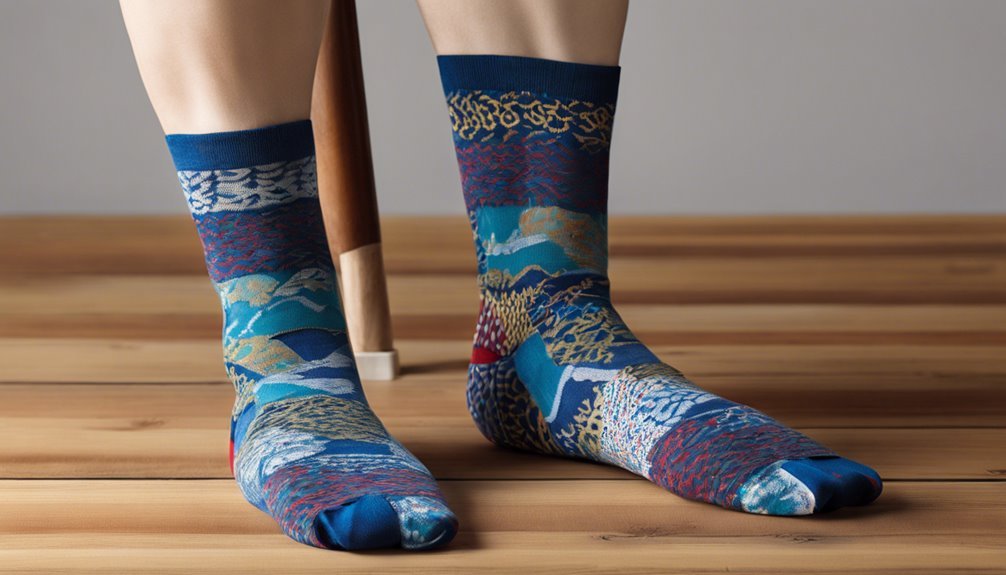
Tabi socks, with their distinctive split-toe design, have carved a unique niche in the fashion world. This design evolution, originating in Japan, reflects a blend of practicality and cultural significance. They allow for a natural foot spread, enhancing balance and comfort—a vital feature for those seeking freedom of movement. Over time, cultural adaptations have played a key role in their integration into various fashion contexts beyond their traditional roots. Tabi's transformation from a utilitarian staple into a modern-day fashion statement speaks to their versatility. The split-toe design has been embraced by designers worldwide, inspiring creative reinterpretations. As you explore the world of fashion, consider how such unique design features can redefine both style and function in your wardrobe.
The Rise of Tabi Socks in Western Fashion
Although it took time for Tabi socks to make their mark in Western fashion, their emergence signals a broader acceptance of diverse cultural influences in contemporary style. As you've probably noticed, the appeal of Tabi lies in its unique blend of tradition and modernity, offering a fashion statement that's as much about cultural fusion as it is about personal expression. Western fashion embraces this blend for several reasons:
- Distinctive Design: The split-toe design sets them apart, adding a unique silhouette to any outfit.
- Comfort and Functionality: Tabi socks offer both comfort and a functional fit, appealing to those seeking more than just aesthetic value.
- Versatility: They pair seamlessly with various footwear, from sandals to sneakers.
- Cultural Resonance: Wearing Tabi can symbolize an appreciation for global cultural heritage.
High Fashion's Adoption of Tabi Aesthetics

As Western fashion continues to embrace Tabi socks for their distinctive design and cultural resonance, high fashion has also begun to integrate Tabi aesthetics into its avant-garde collections. You see designers pushing boundaries, reimagining traditional Tabi split-toe designs as emblematic of freedom and individualism. High fashion houses, particularly Maison Margiela, have elevated the Tabi concept from functional footwear to iconic runway pieces, challenging conventional silhouettes. It's about more than just footwear—Tabi aesthetics influence entire collections, inspiring clothing that deconstructs and redefines norms. By adopting these elements, high fashion creates conversations around cultural exchange and innovation. The allure lies in its ability to blend heritage with forward-thinking design, offering a canvas for creative expression in a world craving uniqueness and freedom.
Streetwear and Everyday Fashion Trends
The world of streetwear has increasingly embraced the unique design of Tabi socks, transforming them from a niche cultural artifact into a staple of everyday fashion. You see, these socks are more than just footwear; they symbolize a cultural fusion that resonates with urban aesthetics. By incorporating Tabi socks into your wardrobe, you're not just following a trend, but expressing a nuanced understanding of style and culture. Consider the following ways they enhance streetwear:
- Effortless edge: Tabi socks add an unexpected twist to any outfit.
- Versatility: Easily paired with sneakers or sandals, they adapt to various looks.
- Cultural nod: Honors traditional Japanese craftsmanship while modernizing your aesthetic.
- Comfort and function: Their split-toe design offers superior comfort and mobility.
Dive into this fashion-forward movement and redefine your everyday style.
The Role of Tabi Socks in Sustainable Fashion
When considering sustainable fashion, you can't overlook the impact of Tabi socks, which often incorporate eco-friendly materials like organic cotton and bamboo. These socks are crafted using traditional techniques that not only preserve cultural heritage but also minimize environmental footprints. Additionally, the minimalist packaging trends associated with Tabi socks contribute to reducing waste, aligning perfectly with the principles of sustainability.
Eco-Friendly Materials Utilized
While the global fashion industry grapples with environmental concerns, tabi socks stand out as a beacon of sustainable innovation through their use of eco-friendly materials. You'll find that these remarkable socks embrace sustainability by incorporating:
- Sustainable fibers and organic cotton that prioritize nature over harmful synthetics.
- Eco-friendly dyes that minimize water pollution and guarantee vibrant, long-lasting colors.
- Biodegradable materials and recycled textiles which contribute to reducing waste in landfills.
- Natural rubber and low-impact production techniques, focusing on ethical sourcing to protect both people and the planet.
Traditional Craftsmanship Techniques
Eco-friendly materials in tabi socks not only contribute to sustainability but also align seamlessly with traditional craftsmanship techniques that have been honed over centuries. You can appreciate how these handcrafted techniques emphasize precision and attention to detail, offering an authentic aesthetic that modern mass production often lacks. Artisans use natural fibers, weaving them meticulously to guarantee durability and comfort. Additionally, the age-old dyeing methods involve plant-based dyes, which not only reduce environmental impact but also produce unique, vibrant hues that are never exactly replicated. This dedication to artistry and sustainability reflects a broader cultural ethos valuing quality over quantity. By choosing tabi socks, you're supporting a fashion movement that cherishes heritage and innovation, all while embracing a liberated, eco-conscious lifestyle.
Minimalist Packaging Trends
As global fashion trends increasingly prioritize sustainability, there's been a notable shift towards minimalist packaging, and tabi socks are at the forefront of this movement. These iconic socks, with their distinct split-toe design, have embraced sustainable packaging and minimalist branding to appeal to eco-conscious consumers like you.
- Reduced Material Use: Minimalist packaging limits waste, cutting down on excessive wrapping.
- Eco-friendly Materials: Brands opt for recycled or biodegradable materials, ensuring a lower environmental impact.
- Clear Messaging: Simplified branding focuses on essential information, fostering transparency and trust.
- Consumer Empowerment: By choosing sustainably packaged tabi socks, you actively support environmentally responsible practices.
This approach not only enhances brand appeal but also aligns with the desire for freedom from waste.
Tabi-Inspired Footwear Innovations
Though rooted in centuries-old tradition, tabi socks have inspired a wave of modern footwear innovations that merge cultural heritage with contemporary design. You'll notice how the tabi design evolution has seamlessly adapted to today's fashion landscape. With its distinctive split-toe feature, tabi footwear trends are making waves in both high fashion and streetwear. This evolution speaks to a desire for individuality and comfort, capturing the essence of freedom many seek in their style choices. Designers are reimagining these classics, incorporating diverse materials and bold aesthetics to create something fresh yet deeply connected to its origins. As you explore these innovations, you can appreciate how they've transcended cultural boundaries, offering a unique blend of past and present for the fashion-forward individual.
Future Prospects for Tabi Socks in Global Fashion
While the world of fashion constantly evolves, the future of tabi socks appears bright and full of potential. These iconic split-toe socks are set to continue influencing global fashion through future trends and cultural fusion. You're likely to see them breaking boundaries and embracing new styles, as fashion enthusiasts seek freedom in self-expression. Here's how tabi socks are poised to shape the future:
- Blending East and West: Expect an increase in designs that marry traditional Japanese aesthetics with modern Western elements.
- Sustainable Materials: As eco-consciousness rises, sustainable tabi socks will gain popularity.
- Athleisure Integration: The comfort of tabi socks makes them perfect for athleisure, a growing trend.
- Customization Options: Personalization will become key, with more bespoke designs available to consumers.
Frequently Asked Questions
How Should I Properly Care for My Tabi Socks?
To properly care for your tabi socks, use gentle cleaning methods like hand washing in cold water. For drying techniques, avoid direct sunlight; instead, lay them flat in a shaded area. This guarantees longevity and maintains their unique shape.
Are Tabi Socks Suitable for All Foot Types?
You're wondering if tabi socks suit all foot types. They're designed for foot comfort and offer style versatility, but individual fit varies. Experimenting with different sizes and materials can provide the freedom to find your perfect match.
What Materials Are Typically Used in Making Tabi Socks?
You're curious about tabi socks and their materials. Typically, they use cotton blends, honoring traditional craftsmanship while ensuring comfort and durability. This blend offers flexibility and breathability, perfect for someone who values both style and freedom.
Can I Wear Tabi Socks With Regular Shoes?
Imagine pairing tabi socks with your favorite sneakers. You'll find they're often compatible with regular shoes, enhancing your fashion combinations. Their split-toe design allows unique comfort, aligning well with various footwear styles. Embrace the unexpected!
Where Can I Purchase Authentic Japanese Tabi Socks?
You can find authentic Japanese tabi socks from online retailers that specialize in traditional craftsmanship. Explore platforms like Etsy or Amazon. They offer a variety of styles, letting you embrace cultural uniqueness without compromising your individual freedom.

